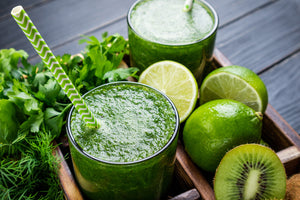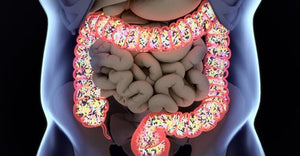Eating Insects

And Now, for Something Really Scary…
In the spirit of the Halloween season, read on (if you dare)!
Skeletons, witches, and haunted houses.
Goblins, ghosts, and ghouls.
From the creepy-crawly to the slimy and slithery, Halloween is filled with all sorts of scary and shudder-inducing creatures. But with the growing popularity of edible insects, it doesn’t have to be Halloween to find something with a crunchy exoskeleton and lots of legs on your plate.
Eating something you might otherwise clean off your windshield or crush under your shoe without a second thought is a brave new frontier for North Americans, but in many other parts of the world, insects are every bit as acceptable at the table as bread and butter. While major cities in the U.S. have taco trucks, falafel carts, mobile cafes, or roasted nut vendors on every corner, in Southeast Asia and tropical locations, it’s not uncommon to see bins full of grasshoppers, worms, crickets, and other creepy creatures battered and fried, or prepared with any number of spices and seasonings. Estimates say as many as two thousand different insect species are consumed in the tropics.
And with increasing concern about the environmental sustainability of the modern food supply, insects require far less land than huge swaths of mono-cropped corn and soy, and less grazing pasture than grass-fed beef and dairy cattle. They’re a good source of micronutrients, protein, and mono- and polyunsaturated fats, so, other than learning to get past the “ick factor,” there isn’t a whole lot working against edible insects. One concern, however, is that unless they’re consumed relatively close to their whole, intact state—legs, antennae, and all—insects would require a fair amount of processing in order to be turned into foods that may be more attractive and palatable for Western tastes. For example, some of the popular snack bars that feature insect protein contain pulverized “cricket flour,” but they’re not just crickets. They’re mostly dried fruit and nuts, which present their own sustainability issues, not to mention being just a small amount of protein wrapped up in a heavy dose of sugar, again, to be more appealing to Western palates.
Eating insects—formally called entomophagy—may be off-putting because of the inherent oddity of it, at least in the industrialized Western world. But one thing that can’t be used as a reason to eschew insects in favor of more recognizable sources of protein is their nutrient content. Based on 100-gram portions, several insect species are no less nutrient-dense than our more commonly consumed proteins, such as pork, beef, and chicken, and some are even more nutritious. Of course, in terms of reaching that amount of nutrient density, it may be far more difficult to consume 100 grams (about 3.5 ounces) of, say, caterpillars and mealworms, than 100 grams of beef or pork. Not to mention, at least for the time being, insect protein is relatively expensive in the U.S., likely owing to its novelty. The price could likely come down in time, as economies of scale exert their influence. (Plus, if consumed in quantities sufficient to achieve nutritional relevance, some insect species—such as mopane caterpillars, palm weevil larvae, and mealworm larvae—bring with them a surprisingly high caloric load, thanks to a generous fat content, even compared to certain cuts of beef and pork. So entomophagy is not a free pass to eat unlimited amounts of insects—in case anyone was tempted. Insects are still food, and they still have calories. You know, in case you were tempted to eat three and a half ounces of mealworm larvae…)
Owing to a great deal of variation in nutrient content, fatty acid profile, and caloric load of various insect species, some researchers dislike the phrase “edible insects,” and argue that the term insects “is not a useful food category in discussions of health and nutrition.” This is akin to wide variation among different cuts of meat (for example, muscle meats compared to organ meats), as well as differences in nutrient content between conventionally produced meat and poultry compared to free range and grass-fed meats. Overall, insects are no more and no less nutritious than our more traditional animal proteins. The environmental argument for consuming insects is stronger than the health angle. And even that might not hold quite as much weight if the economic and environmental impacts of producing insect proteins were compared solely to beef, pork, bison, and poultry raised on pasture, with few inputs other than sunshine and rain, rather than to conventional animal farming, which requires orders of magnitude more water, feed, and technological inputs. (But let’s not forget: insects can be a great addition to animal feed, especially poultry. It could significantly increase the nutrient content of soy and corn-based feed. After all, regardless of claims about “vegetarian fed” and “no animal byproducts” on egg cartons and packaged poultry at the supermarket, chickens and turkeys are omnivores, and fare best when they consume their biologically appropriate diet—which includes grubs, worms, larvae and other creepy critters they would encounter while pecking around in a patch of grass.)
If you’re feeling adventurous and want to expand your gustatory horizons with edible insects, go for it, and you can have Halloween on your plate anytime you like! But no one will blame you if you prefer to stick with burgers or pork chops.
A word of caution for anyone thinking about exploring the world of edible insects: due to similarities in protein structures between seafood shells and insect exoskeletons, individuals with shellfish allergies should be cautious of consuming insects.
Happy Halloween!!
Sources
- Rumpold BA, Schlüter OK. Nutritional composition and safety aspects of edible insects. Mol Nutr Food Res. 2013 May;57(5):802-23.
- van Huis A. Edible insects are the future? Proc Nutr Soc. 2016 Aug;75(3):294-305.
- Payne CLR, Scarborough P, Rayner M, Nonaka K. Are edible insects more or less “healthy” than commonly consumed meats? A comparison using two nutrient profiling models developed to combat over- and undernutrition. European Journal of Clinical Nutrition. 2016;70(3):285-291.
- David Brady







Comments 1
Dr. Naomi Sato
I have my own recipe using cricket powder:
Combine:
3/4 cups ground cricket powder
3 large onions, finely chopped in food processor
3/4 cups ground chia seeds (or flax seds)
1/2 tsp sea salt
1/3 cup olive oil
Spread mixture onto dehydrator sheets or parchment lined baking sheets and dehydrate until “leather”. This takes about 24 hours at 100F or about 4 hours at 150F. Flip part-way through.